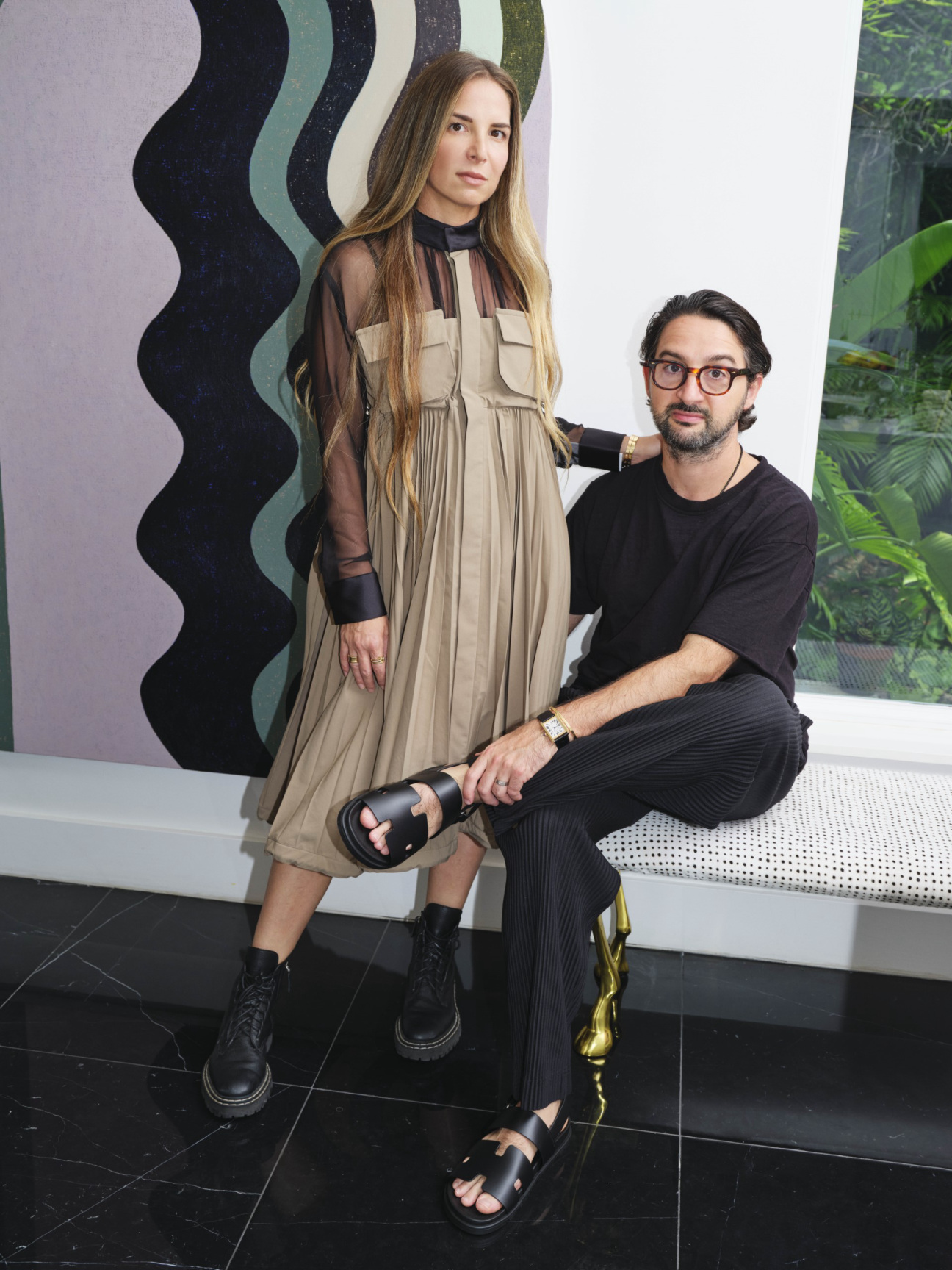
Tara Benmeleh is the founder of lifestyle brand Espiritútara, which produces jewelry and teaware alongside offerings of experiential tea ceremonies and other healing rituals. She met her husband, Jack Benmeleh—the founder of Benmeleh Law, specializing in art law—at the Bass Museum. Shortly thereafter, the two arranged their first date at the Pérez Art Museum Miami, and as their relationship grew, so too did their investment in the Miami art scene.
What do you think makes the Miami art scene unique?
Tara Benmeleh: It’s approachable. The Miami art scene is relatively small and as a result it’s easy to get involved in museums, attend gallery openings, and meet local artists who often will open their studios to visit and connect.
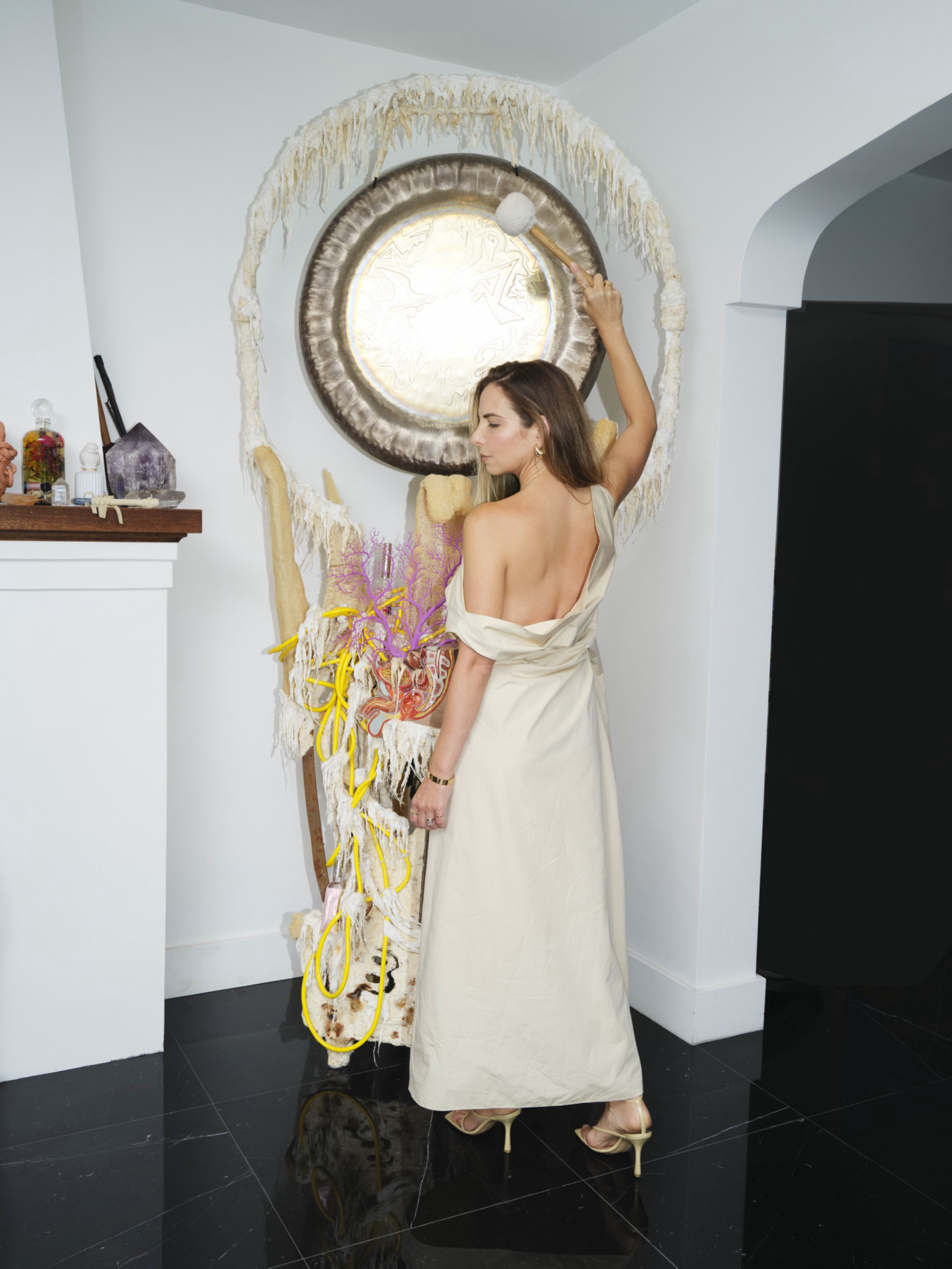
Which work provokes the most conversation from visitors?
Jack Benmeleh: Disease Thrower #1 by Guadalupe Maravilla. It’s a healing sculpture designed to extract disease and harmonize the frequencies of the body. It has a functional gong which we often play for guests and during Kundalini classes Tara hosts weekly.
What was the most challenging piece in your personal collection to acquire?
Tara: A work by Donna Huanca, which arrived just in time for Miami art week. We have been wanting to acquire one for almost 10 years. However, we could not agree on the right work. Earlier this year, while in Mexico, we finally found the one. It’s so big and so beautiful.

What is your earliest memory of Art Basel Miami Beach?
Tara: Before collecting, I remember being excited about the quality of visitors in Miami. I had deep and meaningful conversations and met interesting people. Once we started collecting, we would go to the convention center right as it opened and all of the work we liked was already spoken for. We later realized that once you have a relationship with a gallery, you get previews of the work and have access in advance.
Jack: All the amazing parties… and probably number one in my book was the Prada Double Club by Carsten Höller at the Ice Palace.
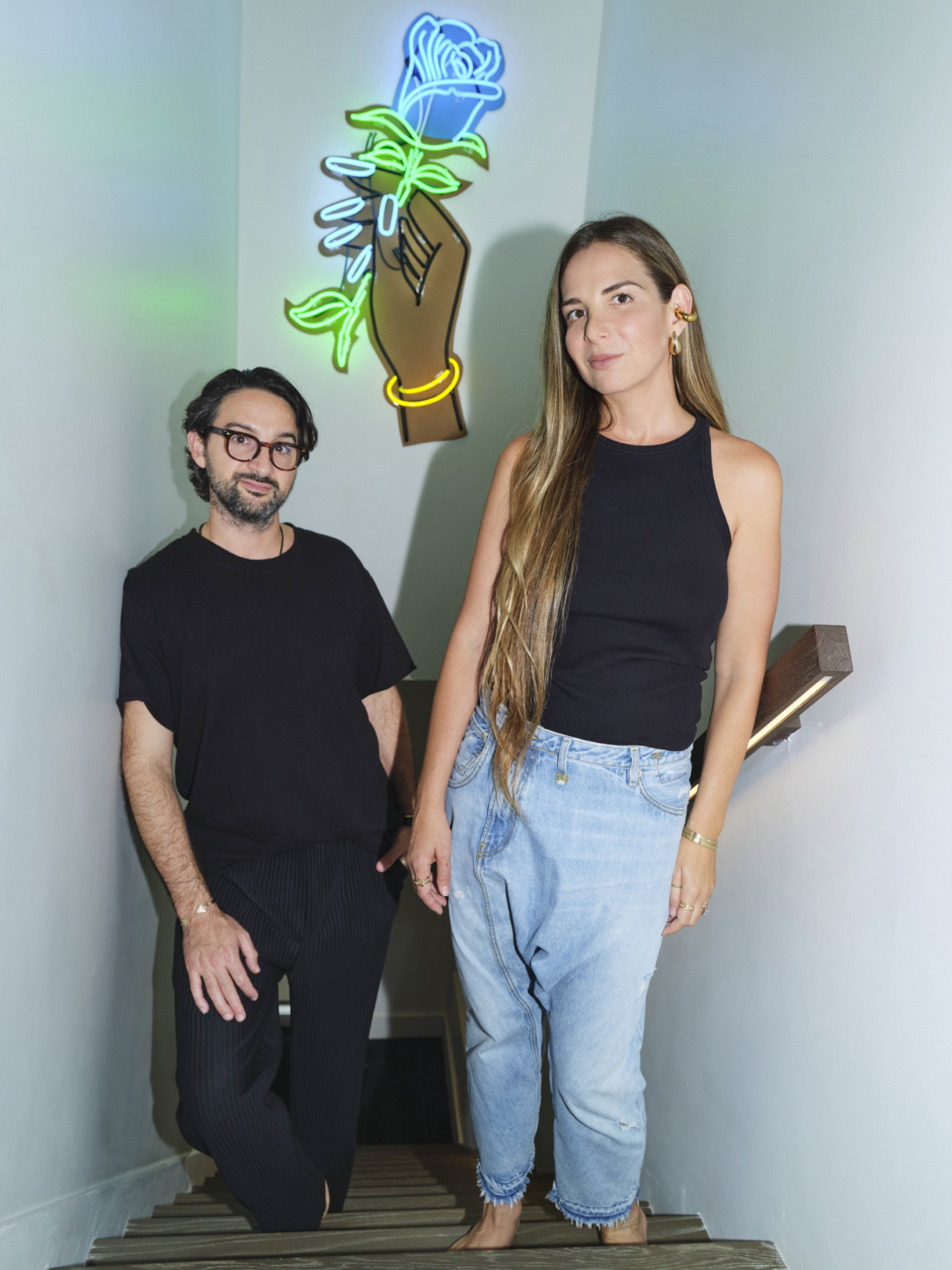
Do you have a memorable ABMB purchase?
Jack: A few years ago we acquired our first Josh Smith “Reaper.” Maybe that same year, Tara purchased a fabulous Carla Fernández jumpsuit at Design Miami, which she still is in love with.
Who or what do you have your eyes on for this year's ABMB?
Tara: Alejandro Piñeiro Bello at KDR305 and the Rubell Museum.
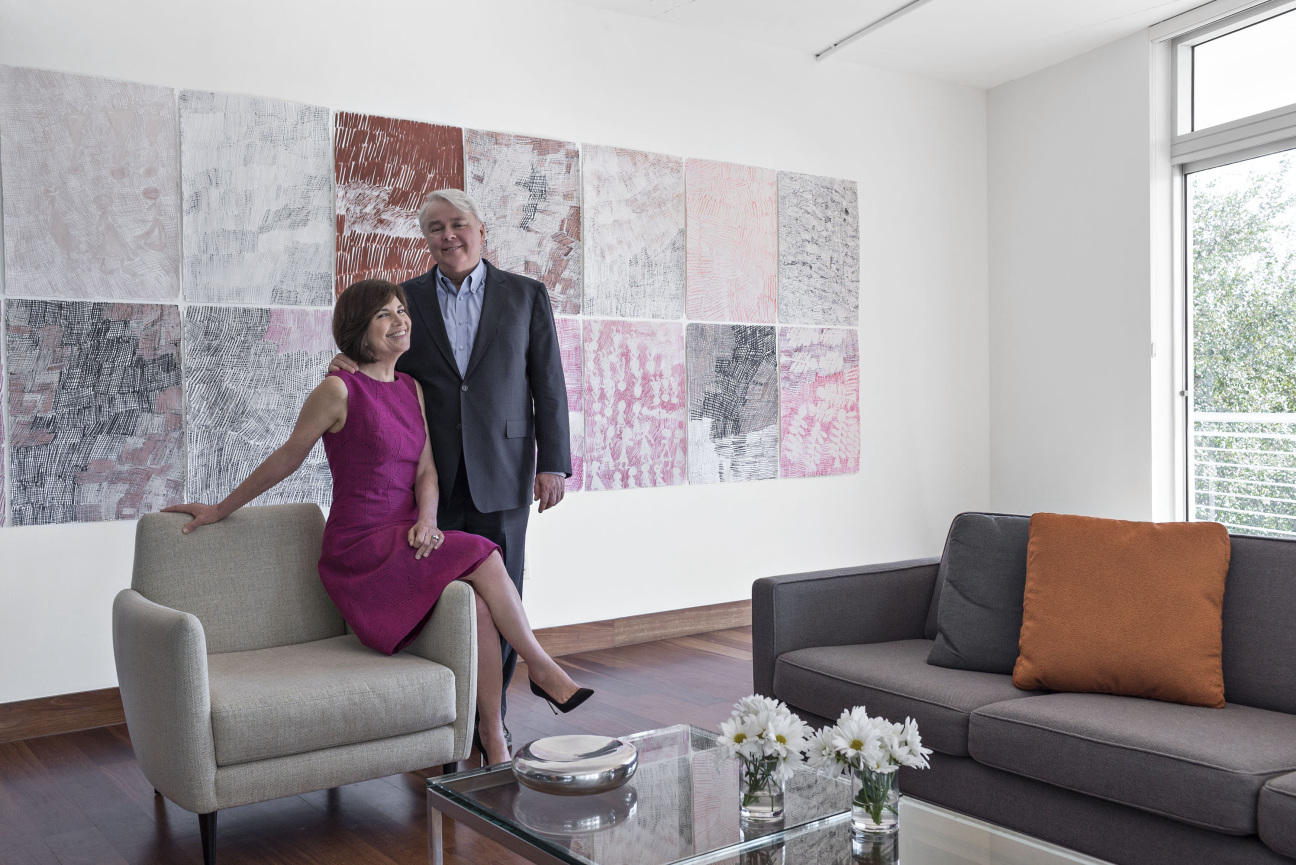
Djorra, 2014-15. All Scholl images courtesy of the artists and collectors.
Documentary filmmaker and producer Dennis Scholl has trained his lens on a plethora of cultural touchstones, including Frank Gehry, Wynton Marsalis, Ai Weiwei, and Tracey Emin. In November, his latest film, Naked Ambition, hit theaters, telling the story of the pinup model and influential photographer Bunny Yeager. Here, Scholl traces his journey in the arts back to a $200 print.
Where does the story of your personal collection begin?
The story of our collection begins in 1978, in a one-room museum on the then-brand new campus of Florida International University. I walked into this modest white box and when I looked on the walls, my life was forever changed. Funny thing is, I have no recollection of the art. I just knew right away that being in that kind of space was going to be an important part of my life.
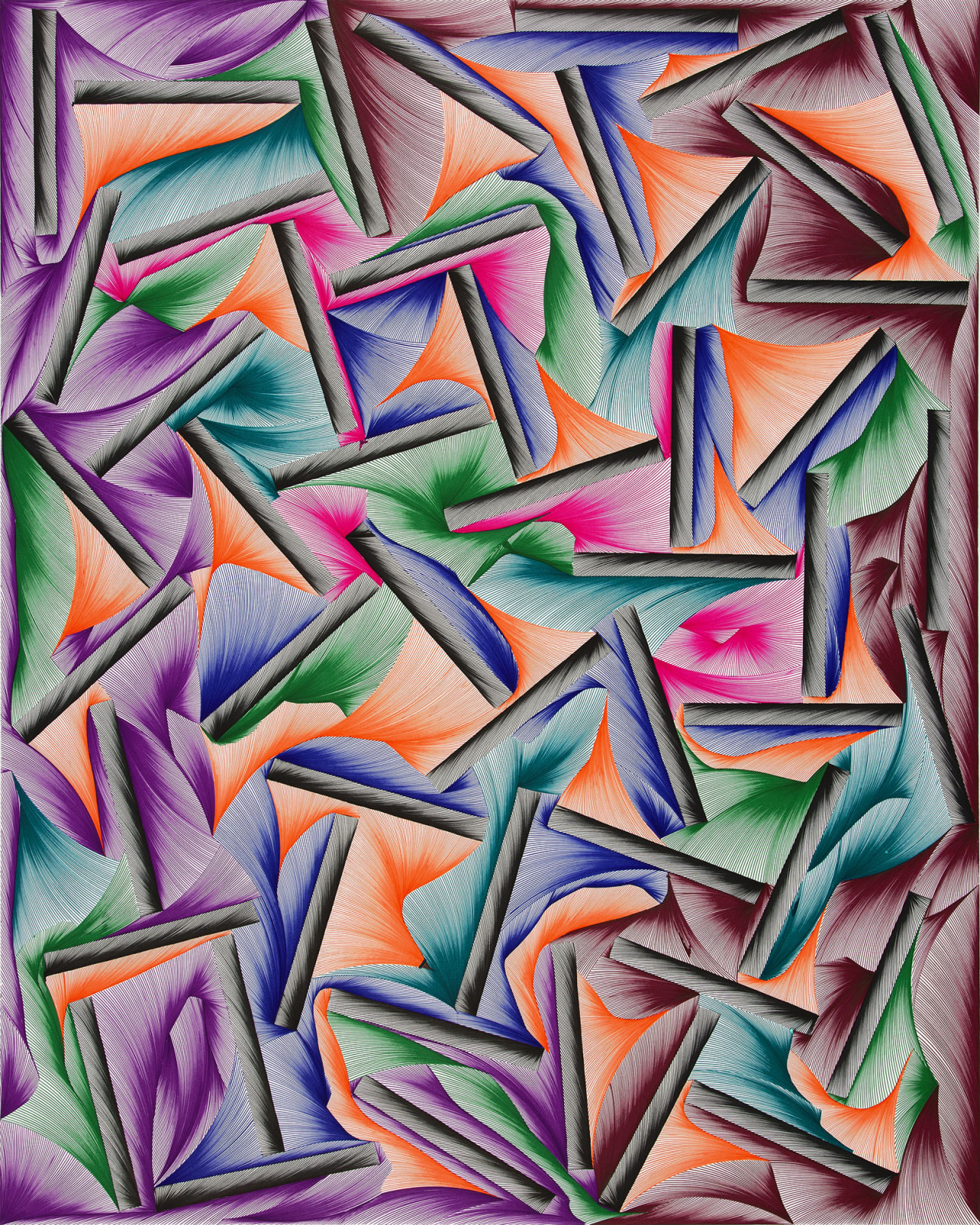
What is the first piece you ever bought?
My first acquisition was a Robert Motherwell print. Retail price was $200 and I think they gave me a nice discount just so I would stop pestering them.
Which work provokes the most conversation from visitors?
It depends on the hang, as we reinstall new works each year using a different curator who selects the works without input from us. This year, I think people will love seeing Willem de Kooning and Joseph Beuys drawings in the guest bathroom…
What was the most challenging piece in your personal collection to acquire?
A number of years ago we saw an Olafur Eliasson piece that spun around suspended from the ceiling and required around 1,000 square feet. We had nowhere to show it, but we couldn’t live without it. So we bought it and also bought a warehouse just to exhibit the work. That was pretty challenging.
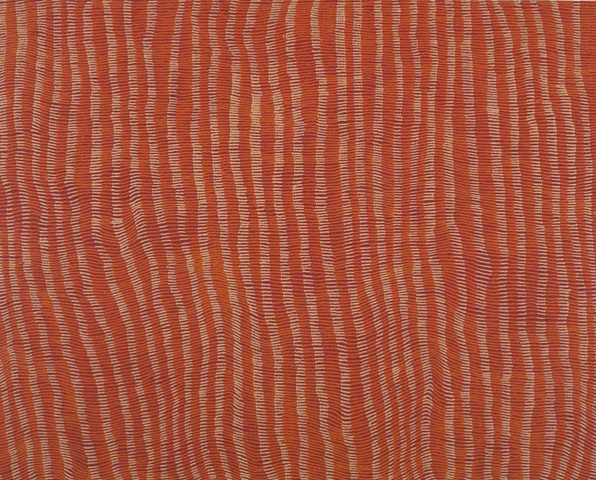
What is your earliest memory of Art Basel Miami Beach?
My earliest memory of Art Basel Miami Beach was the year it didn’t take place. The fair was cancelled in 2001 because of 9/11 but over 100 of the world’s greatest collectors came to Miami anyway. We invited them to our home one evening and I sat there and said to myself, “This thing is going to be huge!” It turned out to be exactly that.
Do you have a memorable ABMB purchase?
We loved finding the art of Samuel Levi Jones—which repurposes old law books into beautiful and powerful works of art—and eventually acquiring a number of his works.
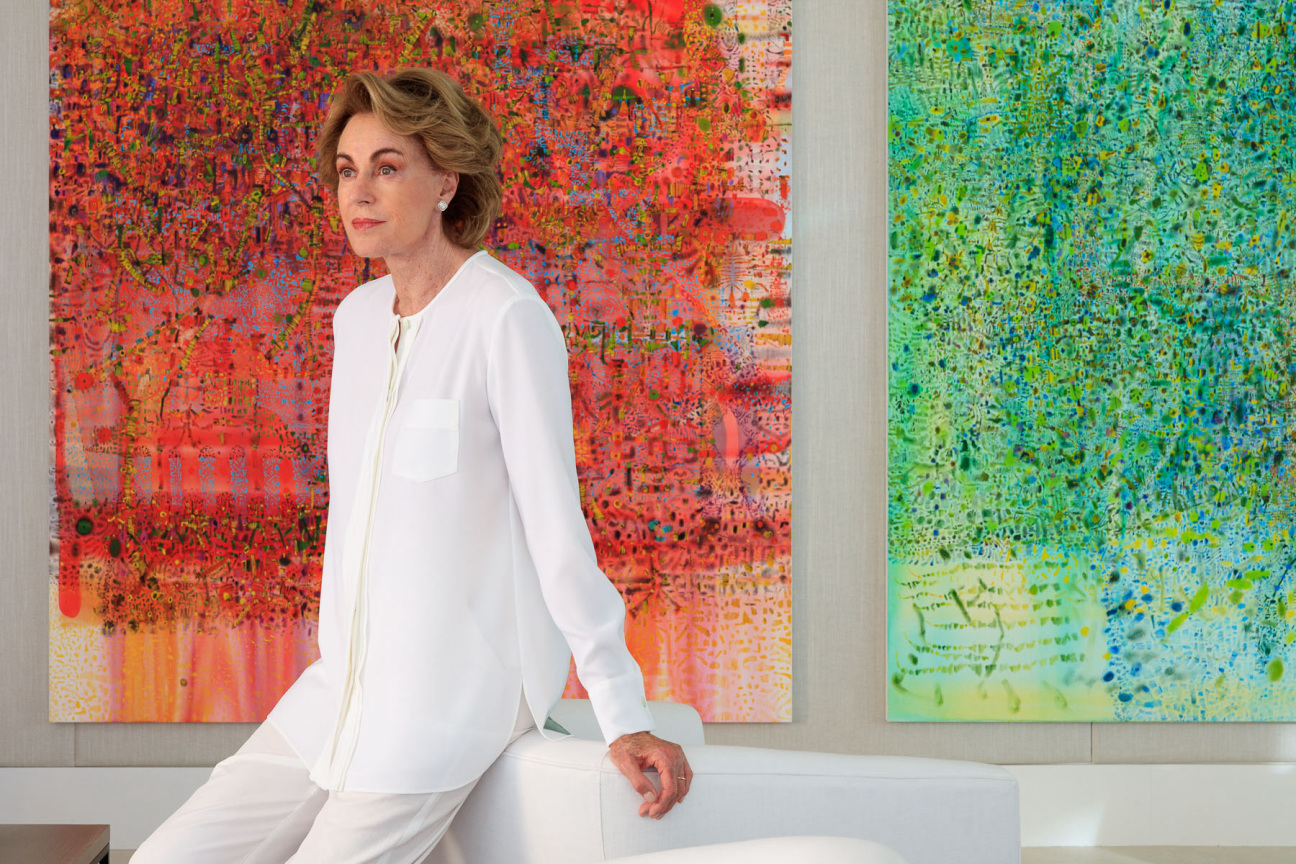
Collector Pilar Crespi Robert began her career in fashion. While living in Italy, she worked for Valentino and Gucci before moving to New York to start her own PR firm. Now based in Miami, she serves as vice president of the board of social service agency Henry Street Settlement and as co-chair of the Source of Hope Foundation, an aid organization she founded with her husband, Stephen Robert. Over the years, the two have seen the city transform.
What do you think makes the Miami art scene unique?
The Miami art scene has changed completely in the past 15 years. I think mostly because of Art Basel. That brought excitement and innovation to the local art scene. Collectors like coming to Miami because of the lifestyle, the weather, the museums, the art spaces that have opened recently, and most importantly, because the people here are very warm and welcoming.
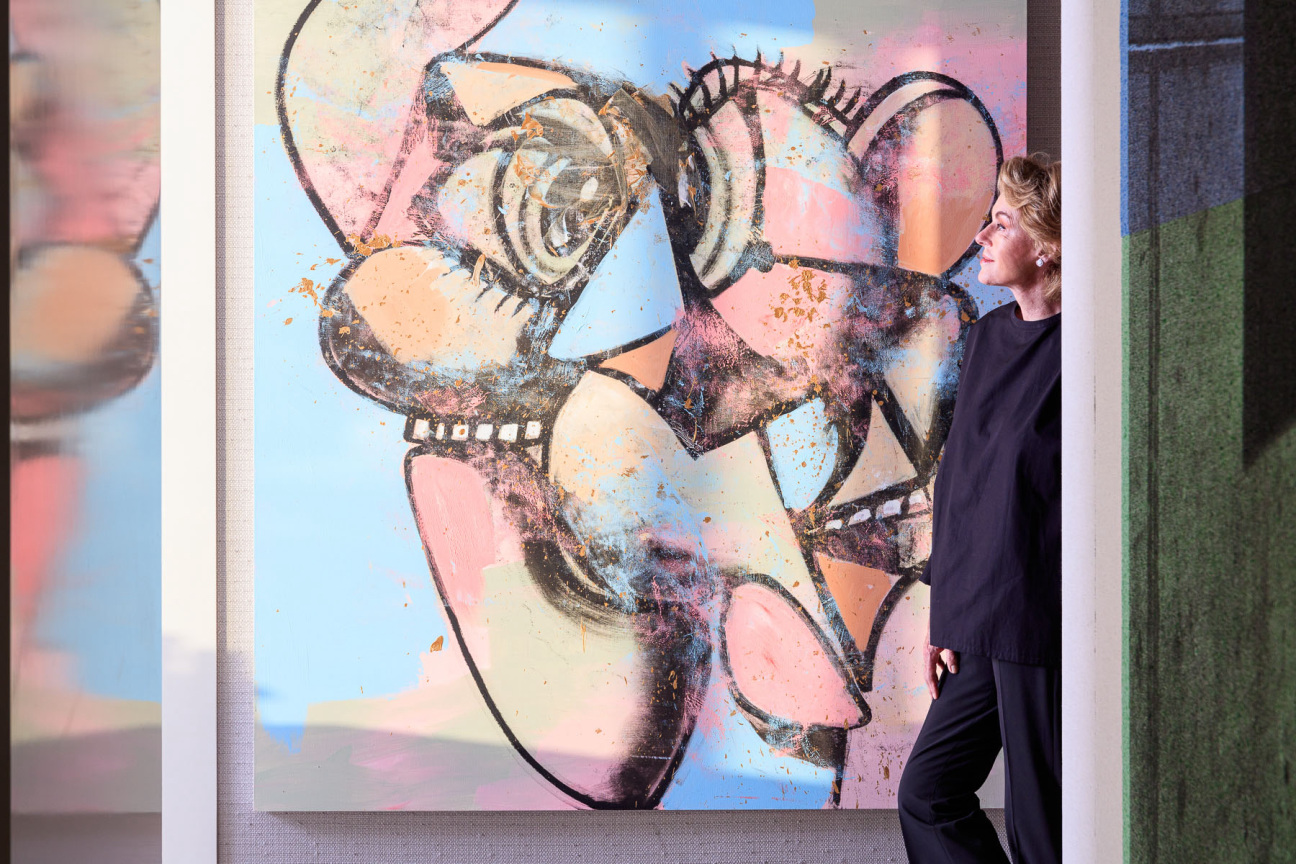
Where does the story of your personal collection begin?
I grew up in Italy in a very creative and artistic family. Outings on weekends always included a visit to a museum or historical town. My husband, Stephen Robert, and I began collecting together in the mid-‘90s. We collect from post-Impressionist to contemporary. We have very similar taste and we only buy art if we both love it.
What is the first piece you ever bought?
I started collecting while living in Rome. Some of the Arte Povera artists were my friends, so I remember that in late 1960 my first buy was a Tano Festa drawing and a Mario Schifano painting. At that time, these works were very affordable and available. I liked the minimalism and poetry of both works.

Which work provokes the most conversation from visitors?
I think people are mostly attracted to our collection of “memes” by Antony Gormley and a mobile made with stones by Alexander Calder. The “memes” are beautiful and when you put them all together, their scale adds to the beauty. The Calder is one of five made with stones in the 1940s. Its beauty lies in its simplicity and lightness, which seems to dispel the heaviness of the stones.
What was the most challenging piece in your personal collection to acquire?
The most challenging piece of art we bought was a Damien Hirst map of Hollywood made with surgical blades. It is creative and powerful, but difficult to embrace.

What is your earliest memory of Art Basel Miami Beach?
We went to the fair for the first time in 2003. You could feel the enthusiasm of the gallerists, collectors, and visitors. We knew that it would improve and become more international with time. I think we have not missed an edition since.
Do you have a memorable ABMB purchase?
A Mark Bradford about 13 years ago from White Cube. There was a waiting list to buy the painting and we were lucky to get it.
Who or what do you have your eyes sight on for this season of ABMB?
I like looking at the work of young artists. There are two painters I would love to collect in depth: Mohammed Sami and Tommy Harrison.










 in your life?
in your life?

